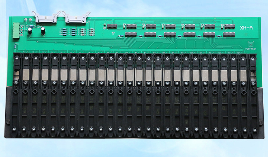Why the PCBA product execution burn-in (B/I) can not intercept the problem of DDR virtual soldering?
PCB company recently encountered a problem with DDR memory chip (chip) soldering. When actually sending personnel to the client’s site for inspection and repair, it was found that the product could not be turned on. Just press and hold the DDR IC to turn it on, but let it go. After the DDR is suppressed, the product cannot be turned on again.
The products have been 100% tested in the factory, and there is a 12H burn-in (B/I) program. How can there still be defective products flowing into the hands of customers? What is going on?
From the description of this problem, this should be a typical HIP (Head-In-Pillow) double-ball virtual soldering problem. This type of problem is usually caused by the high temperature of the FR4 of the IC chip or PCB flowing through the Reflow (reflow). Bending deformation occurs during the zone, and the solder ball of the BGA (Ball) and the solder paste printed on the PCB cannot be contacted and melted together after melting.

According to experience, generally 99% of HIP occurs on the outermost row of solder balls around the BGA. The reason is almost all that the BGA carrier board or PCB circuit board deforms and warps when the Reflow temperature is high. After the board is warmed up The amount of deformation is reduced, but the molten tin has cooled and solidified, thus forming the appearance of double balls close together.
HIP is actually a serious BGA solder defect. Although this type of defect rate is not high, it is easy to pass the internal test procedures of the factory and flow to the customer's hands. However, after the end customer uses it for a period of time, the product will be The company was sent back for repair due to poor contact, which seriously affected the company’s reputation and user experience.
However, it is obvious that all products are burned/in, and the production line is 100% through electrical testing. Why can't the problem of DDR virtual soldering be intercepted?
This is actually a very interesting question. The following is just the personal experience of Shenzhen Honglijie. It does not mean that this is definitely the case.
Imagine first under what circumstances will HIP show an open circuit (open)? Most of the cases should happen when the board is heated and begins to deform, that is, if the product is just turned on and is still in the cooling stage, the HIP double ball may show a false contact state, so there is no problem when the product is turned on. After a period of time, the product began to heat up and gradually the plate began to deform slightly due to the heat, so an open circuit phenomenon appeared.
Therefore, the possible reasons for the electronic assembly factory (EMS, Electronics Manufacturing Service) not detecting the DDR empty welding are as follows:
1. The product was not powered on for testing when it was burned (B/I). It is possible to just put the PCBA product at a certain temperature for a certain period of time, without turning on the power for B/I. Of course, no problem can be detected. This most often occurs in the production of PCBA. factory.
2. The product is plugged in and powered on for burn-in (B/I), but there is no program designed to run the DDR memory test. Some DDR solder joints may not affect the booting of the product. Only when the program runs to certain memory addresses, there will be problems.
3. Assuming that the product is plugged in and tested for DDR memory during burn-in, but some errors will disappear as long as you restart it. If you don't make a record at any time during the burn-in process, there is likely to be no way to catch this type of DDR problem. Therefore, it is best to perform self-test when the product is burning and record whether you have made an error or have been in the machine, so that you can really know whether there is a real burning problem during the burning process.
Therefore, if the program cannot just run to the functional position of the virtual solder when the PCBA product burn-in temperature rises, it is really not possible to detect the DDR with the HIP virtual solder problem.